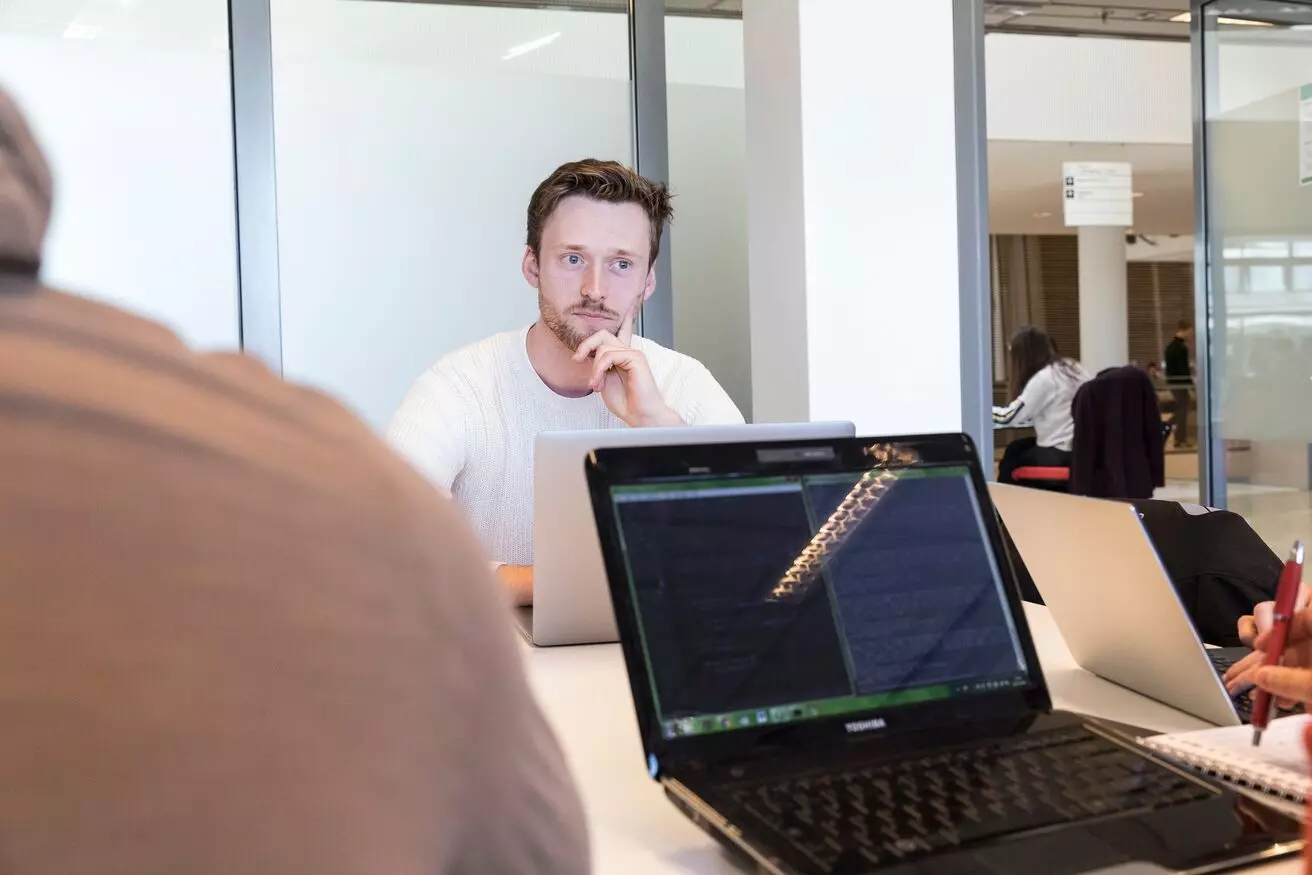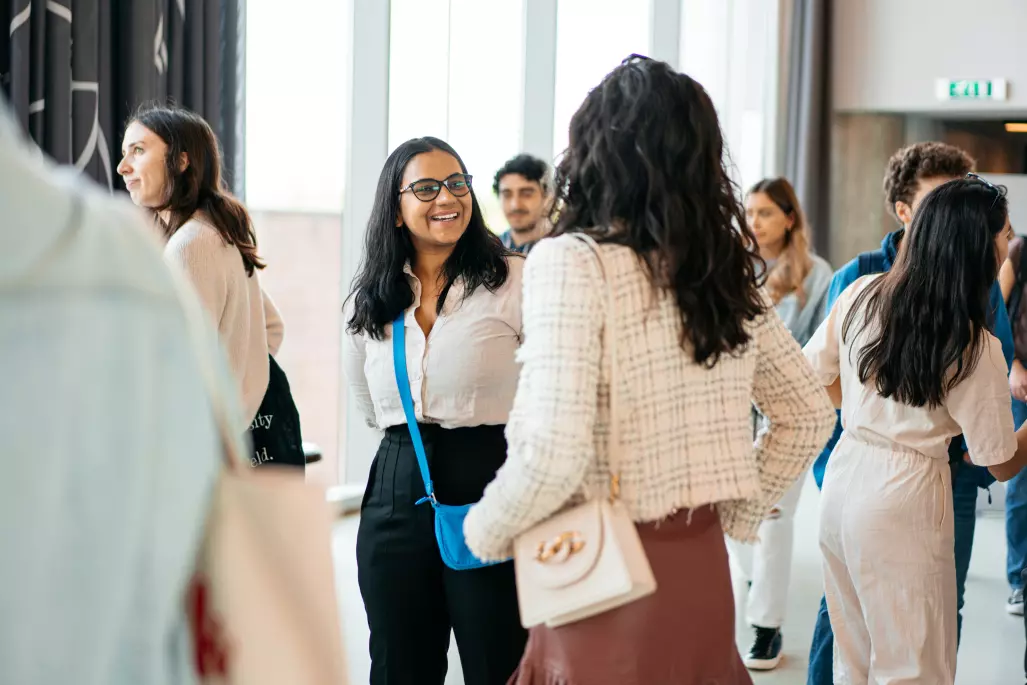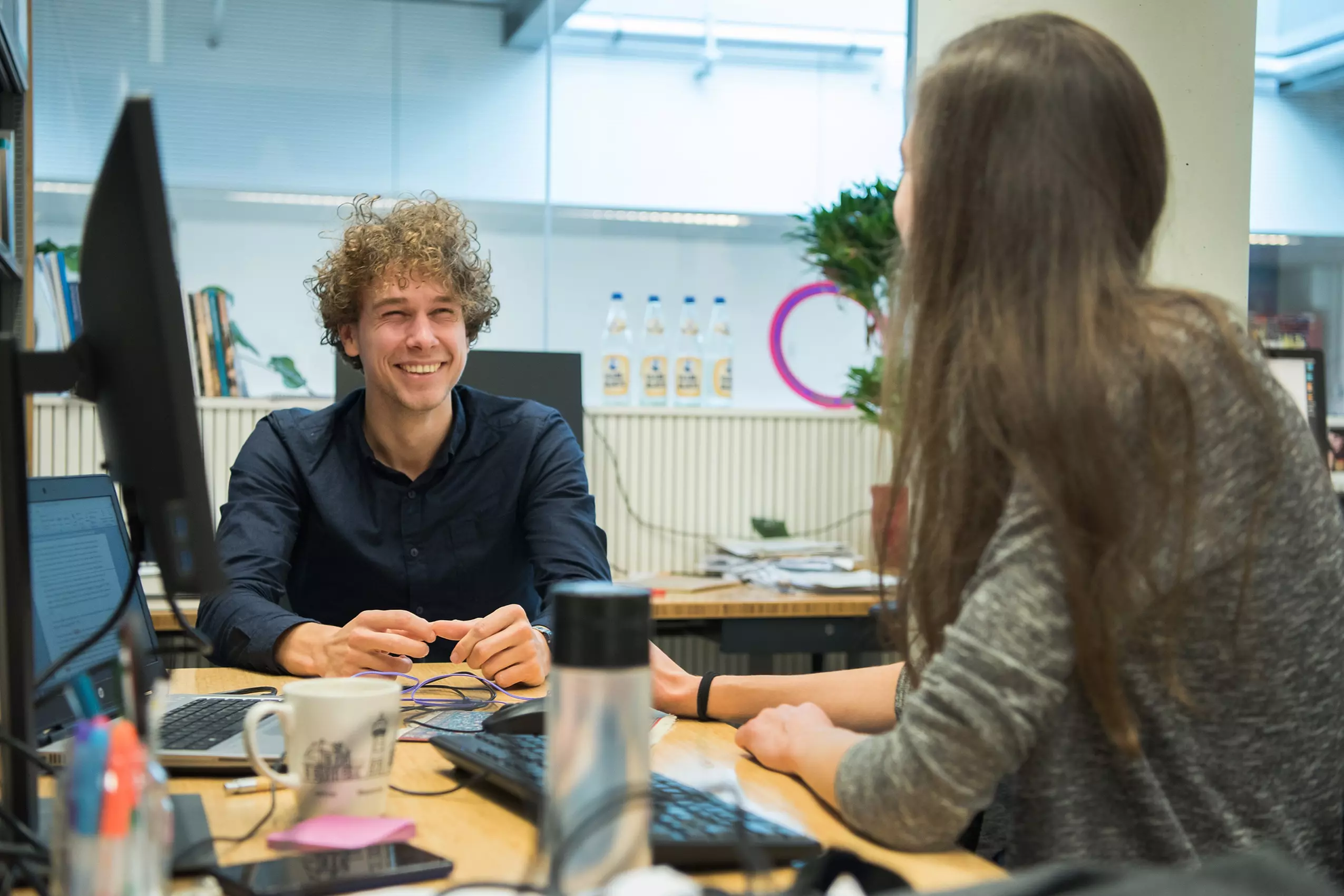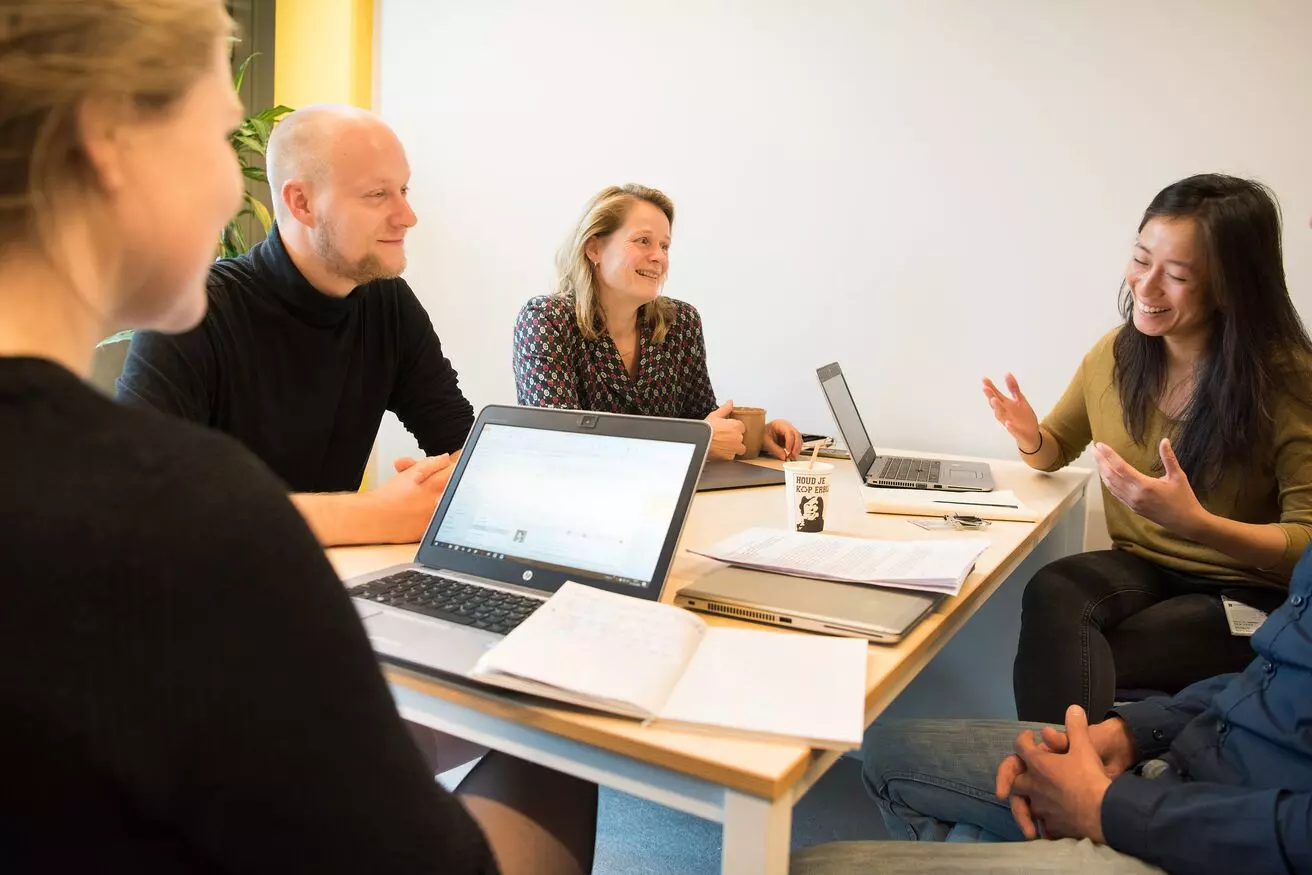This website uses cookies
We, and third parties, use cookies on our website. We use cookies to ensure that our website functions properly, to store your preferences, to gain insight into visitor behavior, but also for marketing and social media purposes (showing personalized advertisements). By clicking 'Accept', you agree to the use of all cookies. In our Cookie Statement. you can read more about the cookies we use and save or change your preferences. By clicking 'Refuse' you only agree to the use of functional cookies.

2 PhD Positions in the ATLAS Group
- Faculty of Science
- 14559
- Master's
- €3.059 - €3.881
- 38 hours
- Closes on16-11-2025

2 PhD Positions in the ATLAS Group
- Faculty of Science
- 14559
- Master's
- €3.059 - €3.881
- 38 hours
- Closes on16-11-2025
Working at the UvA
Join Us!
Nikhef is the national institute for subatomic physics in the Netherlands. At Nikhef, approximately 220 physicists and 80 technical staff work together in an open and international scientific environment. Together they perform theoretical and experimental research in the fields of particle and astroparticle physics. Nikhef is a partnership between six major Dutch universities and NWO-I Foundation, the Institutes Organization of the Dutch Research Council (NWO). Among the research collaborations Nikhef participates in are the ALICE, ATLAS and LHCb experiments at CERN, the KM3NeT neutrino telescope in the Mediterranean, the Virgo gravitational waves interferometer in Pisa, the Xenon-nT dark matter experiment in Gran Sasso, the Pierre Auger cosmic ray observatory in Argentina, and the eEDM research programme in Groningen. There are also scientific groups on Theory, Physics Data Processing and Detector R&D. Nikhef avails over excellently equipped technical departments in mechanics, electronics and computing. The Nikhef ATLAS group consists of a total of 15 scientific staff, typically 5 postdocs and 15 PhD students. As a founding member of the ATLAS collaboration, the group has a long-term involvement in detector construction (the semiconductor tracker, barrel muon chambers, readout, alignment, and data acquisition). For the phase-2 upgrade (2027-2030), we will instrument and commission one of the end-caps of a new all-silicon inner tracking system (ITk) in Amsterdam, commission the High Granularity Timing Detector (HGTD), and develop the new universal readout system (FELIX) for ATLAS detector systems. The group also has a strong record in track reconstruction, flavour tagging algorithm development as well as physics data analysis, with a focus on Higgs boson physics, top quark physics, and searches for new physics signatures.

Working at the UvA
Join Us!
Nikhef is the national institute for subatomic physics in the Netherlands. At Nikhef, approximately 220 physicists and 80 technical staff work together in an open and international scientific environment. Together they perform theoretical and experimental research in the fields of particle and astroparticle physics. Nikhef is a partnership between six major Dutch universities and NWO-I Foundation, the Institutes Organization of the Dutch Research Council (NWO). Among the research collaborations Nikhef participates in are the ALICE, ATLAS and LHCb experiments at CERN, the KM3NeT neutrino telescope in the Mediterranean, the Virgo gravitational waves interferometer in Pisa, the Xenon-nT dark matter experiment in Gran Sasso, the Pierre Auger cosmic ray observatory in Argentina, and the eEDM research programme in Groningen. There are also scientific groups on Theory, Physics Data Processing and Detector R&D. Nikhef avails over excellently equipped technical departments in mechanics, electronics and computing. The Nikhef ATLAS group consists of a total of 15 scientific staff, typically 5 postdocs and 15 PhD students. As a founding member of the ATLAS collaboration, the group has a long-term involvement in detector construction (the semiconductor tracker, barrel muon chambers, readout, alignment, and data acquisition). For the phase-2 upgrade (2027-2030), we will instrument and commission one of the end-caps of a new all-silicon inner tracking system (ITk) in Amsterdam, commission the High Granularity Timing Detector (HGTD), and develop the new universal readout system (FELIX) for ATLAS detector systems. The group also has a strong record in track reconstruction, flavour tagging algorithm development as well as physics data analysis, with a focus on Higgs boson physics, top quark physics, and searches for new physics signatures.
All about this vacancy
This is what you will do
After the discovery of the Higgs boson in 2012, one of the crucial future challenges for the LHC is to probe its most enigmatic property, the Higgs potential, which can manifest itself in LHC collisions through the production of Higgs boson pairs. These decays, which are 1000 times more rare than single Higgs production according to the Standard Model have not yet been observed. Observation of two-Higgs production is one the most important milestone for the LHC physics program, and will help constrain our knowledge of the Higgs potential, which has shaped the universe at its time of creation, and may hold strong clues about the existence of new physics beyond the Standard Model.
Position 1 will focus on the search for the extremely rare process of ttHH production in LHC Run-3 data. This search will include all tt final states, and will include boosted final states. The analysis strategy is strongly focused on advanced machine learning techniques, developing attention-based transformer models that will directly classify events from the low-level data, rather than high-level objects, and which may ultimately include higher-level tasks such as Higgs boson mass regression for the analyzed data. The boosted object analysis will have a strong synergy with boosted analyses we are performing in other two-Higgs channels. This position is co-supervised by prof. dr. Ivo van Vulpen, dr. Clara Nellist, and dr. Sascha Caron. The candidates is employed by the University of Amsterdam, is primarily based at Nikhef in Amsterdam.
Position 2 will focus on the reconstruction of two-Higgs decay channel into a pair of photons and a pair of b-quarks (HHàbbγγ) , which currently provides the tightest constraints, and on the combined interpretation of all reconstructed diHiggs channels. Apart from the Run-3 diHiggs combination of all channels, which will provide the ultimate statement on diHiggs production that can be obtained with the LHC Run-3 data, a combination of single-Higgs, di-Higgs and triple-Higgs production measurements will allow to constrain the trilinear and quartic Higgs coupling, and thus the shape of the Higgs potential with unprecedented precision. In this position you will closely work together with PhD students involved in the main diHiggs channels (bbbb, bbττ and bbVV) for the combined interpretation and with a postdoc that is being recruited simultaneously that work on novel ML-based strategies to improve the precision of diHiggs combined interpretations. This position is co-supervised by prof. dr. Wouter Verkerke, prof. dr. Tristan du Pree. The candidates is employed by the University of Amsterdam, is primarily based at Nikhef in Amsterdam.
The positions offered here are part of a NWO-funded physics program 'The potential of the Higgs boson', with prof. dr. Pamela Ferrari as principle investigator, which will ultimately comprise 7 PhD positions and 2 postdoc positions in the Nikhef ATLAS group in the period 2025-2030 all focused on the Higgs boson potential, complemented by 9 Nikhef staff scientists that offer supervision, networking opportunities and a specialized training program in data analysis techniques and Higgs boson physics.
What we ask of you
We are looking for PhD candidates with an (almost) completed Master degree in high-energy physics or in a closely related field. The ideal candidate has a strong interest in data analysis, has good software skills (Python, C++, ROOT) and has (some) research experience in experimental particle physics. Experience with machine learning algorithms and software is desirable but not required.
This is what we offer you
We offer a temporary contract for 38 hours per week for the duration of 4 years (the initial contract will be for a period of 18 months and after satisfactory evaluation it will be extended for a total duration of 4 years). The gross monthly salary, based on 38 hours per week ranges between € 3,059 to € 3,881 (Scale P). This does not include 8% holiday allowance and 8,3% year-end allowance. The UFO profile PhD candidate is applicable. A favourable tax agreement, the ‘30% ruling’, may apply to non-Dutch applicants.
The preferred starting date is to be discussed. This employment should lead to a dissertation (PhD thesis). We will draft an educational plan that includes attendance of courses and (international) meetings. We also expect you to assist in teaching undergraduates and master students. During the doctoral program there is the possibility for extended stays at CERN, up to a total of 1 year.
The Collective Labour Agreement of Universities of the Netherlands is applicable.
All about this vacancy
This is what you will do
After the discovery of the Higgs boson in 2012, one of the crucial future challenges for the LHC is to probe its most enigmatic property, the Higgs potential, which can manifest itself in LHC collisions through the production of Higgs boson pairs. These decays, which are 1000 times more rare than single Higgs production according to the Standard Model have not yet been observed. Observation of two-Higgs production is one the most important milestone for the LHC physics program, and will help constrain our knowledge of the Higgs potential, which has shaped the universe at its time of creation, and may hold strong clues about the existence of new physics beyond the Standard Model.
Position 1 will focus on the search for the extremely rare process of ttHH production in LHC Run-3 data. This search will include all tt final states, and will include boosted final states. The analysis strategy is strongly focused on advanced machine learning techniques, developing attention-based transformer models that will directly classify events from the low-level data, rather than high-level objects, and which may ultimately include higher-level tasks such as Higgs boson mass regression for the analyzed data. The boosted object analysis will have a strong synergy with boosted analyses we are performing in other two-Higgs channels. This position is co-supervised by prof. dr. Ivo van Vulpen, dr. Clara Nellist, and dr. Sascha Caron. The candidates is employed by the University of Amsterdam, is primarily based at Nikhef in Amsterdam.
Position 2 will focus on the reconstruction of two-Higgs decay channel into a pair of photons and a pair of b-quarks (HHàbbγγ) , which currently provides the tightest constraints, and on the combined interpretation of all reconstructed diHiggs channels. Apart from the Run-3 diHiggs combination of all channels, which will provide the ultimate statement on diHiggs production that can be obtained with the LHC Run-3 data, a combination of single-Higgs, di-Higgs and triple-Higgs production measurements will allow to constrain the trilinear and quartic Higgs coupling, and thus the shape of the Higgs potential with unprecedented precision. In this position you will closely work together with PhD students involved in the main diHiggs channels (bbbb, bbττ and bbVV) for the combined interpretation and with a postdoc that is being recruited simultaneously that work on novel ML-based strategies to improve the precision of diHiggs combined interpretations. This position is co-supervised by prof. dr. Wouter Verkerke, prof. dr. Tristan du Pree. The candidates is employed by the University of Amsterdam, is primarily based at Nikhef in Amsterdam.
The positions offered here are part of a NWO-funded physics program 'The potential of the Higgs boson', with prof. dr. Pamela Ferrari as principle investigator, which will ultimately comprise 7 PhD positions and 2 postdoc positions in the Nikhef ATLAS group in the period 2025-2030 all focused on the Higgs boson potential, complemented by 9 Nikhef staff scientists that offer supervision, networking opportunities and a specialized training program in data analysis techniques and Higgs boson physics.
What we ask of you
We are looking for PhD candidates with an (almost) completed Master degree in high-energy physics or in a closely related field. The ideal candidate has a strong interest in data analysis, has good software skills (Python, C++, ROOT) and has (some) research experience in experimental particle physics. Experience with machine learning algorithms and software is desirable but not required.
This is what we offer you
We offer a temporary contract for 38 hours per week for the duration of 4 years (the initial contract will be for a period of 18 months and after satisfactory evaluation it will be extended for a total duration of 4 years). The gross monthly salary, based on 38 hours per week ranges between € 3,059 to € 3,881 (Scale P). This does not include 8% holiday allowance and 8,3% year-end allowance. The UFO profile PhD candidate is applicable. A favourable tax agreement, the ‘30% ruling’, may apply to non-Dutch applicants.
The preferred starting date is to be discussed. This employment should lead to a dissertation (PhD thesis). We will draft an educational plan that includes attendance of courses and (international) meetings. We also expect you to assist in teaching undergraduates and master students. During the doctoral program there is the possibility for extended stays at CERN, up to a total of 1 year.
The Collective Labour Agreement of Universities of the Netherlands is applicable.
Your place at the UvA
You will work in this team
The Faculty of Science has a student body of around 8,000, as well as 1,800 members of staff working in education, research or support services. Researchers and students at the Faculty of Science are fascinated by every aspect of how the world works, be it elementary particles, the birth of the universe or the functioning of the brain.
The Institute of Physics (IoP) of the University of Amsterdam is located in the center of the Amsterdam Science Park. The IoP – as part of the Faculty of Science –is housed in a modern building with excellent labs and technical facilities. Surrounded by several national research institutes and with our partners at the Vrije Universiteit (VU) Amsterdam, the institute is part of a strong physics center of international standing.
Nikhef is the national institute for subatomic physics in the Netherlands. At Nikhef, approximately 250 physicists and 80 technical staff work together in an open and international scientific environment. Together they perform theoretical and experimental research in the fields of particle and astroparticle physics. Nikhef is a partnership between six major Dutch universities and NWO-I Foundation, the Institutes Organization of the Dutch Research Council (NWO).
Among the research collaborations Nikhef participates in are the ALICE, ATLAS and LHCb experiments at CERN, the KM3NeT neutrino telescope in the Mediterranean, the Virgo gravitational waves interferometer in Pisa, the Xenon-nT dark matter experiment in Gran Sasso, the Pierre Auger cosmic ray observatory in Argentina, and the eEDM research programme in Groningen. There are also scientific groups on Theory, Physics Data Processing and Detector R&D. Nikhef avails over excellently equipped technical departments in mechanics, electronics and computing.
The Nikhef ATLAS group consists of a total of 15 scientific staff, typically 5 postdocs and 15 PhD students. As a founding member of the ATLAS collaboration, the group has a long-term involvement in detector construction (the semiconductor tracker, barrel muon chambers, readout, alignment, and data acquisition). For the phase-2 upgrade (2027-2030), we will instrument and commission one of the end-caps of a new all-silicon inner tracking system (ITk) in Amsterdam, commission the High Granularity Timing Detector (HGTD), and develop the new universal readout system (FELIX) for ATLAS detector systems. The group also has a strong record in track reconstruction, flavour tagging algorithm development as well as physics data analysis, with a focus on Higgs boson physics, top quark physics, and searches for new physics signatures.
Want to know more about our organisation? Read more about working at the University of Amsterdam.
More about the UvA
Your place at the UvA
This is where you will be working
You will work in this team
The Faculty of Science has a student body of around 8,000, as well as 1,800 members of staff working in education, research or support services. Researchers and students at the Faculty of Science are fascinated by every aspect of how the world works, be it elementary particles, the birth of the universe or the functioning of the brain.
The Institute of Physics (IoP) of the University of Amsterdam is located in the center of the Amsterdam Science Park. The IoP – as part of the Faculty of Science –is housed in a modern building with excellent labs and technical facilities. Surrounded by several national research institutes and with our partners at the Vrije Universiteit (VU) Amsterdam, the institute is part of a strong physics center of international standing.
Nikhef is the national institute for subatomic physics in the Netherlands. At Nikhef, approximately 250 physicists and 80 technical staff work together in an open and international scientific environment. Together they perform theoretical and experimental research in the fields of particle and astroparticle physics. Nikhef is a partnership between six major Dutch universities and NWO-I Foundation, the Institutes Organization of the Dutch Research Council (NWO).
Among the research collaborations Nikhef participates in are the ALICE, ATLAS and LHCb experiments at CERN, the KM3NeT neutrino telescope in the Mediterranean, the Virgo gravitational waves interferometer in Pisa, the Xenon-nT dark matter experiment in Gran Sasso, the Pierre Auger cosmic ray observatory in Argentina, and the eEDM research programme in Groningen. There are also scientific groups on Theory, Physics Data Processing and Detector R&D. Nikhef avails over excellently equipped technical departments in mechanics, electronics and computing.
The Nikhef ATLAS group consists of a total of 15 scientific staff, typically 5 postdocs and 15 PhD students. As a founding member of the ATLAS collaboration, the group has a long-term involvement in detector construction (the semiconductor tracker, barrel muon chambers, readout, alignment, and data acquisition). For the phase-2 upgrade (2027-2030), we will instrument and commission one of the end-caps of a new all-silicon inner tracking system (ITk) in Amsterdam, commission the High Granularity Timing Detector (HGTD), and develop the new universal readout system (FELIX) for ATLAS detector systems. The group also has a strong record in track reconstruction, flavour tagging algorithm development as well as physics data analysis, with a focus on Higgs boson physics, top quark physics, and searches for new physics signatures.
Want to know more about our organisation? Read more about working at the University of Amsterdam.
More about the UvA
Important to know
Your application & contact
If you feel the profile fits you, and you are interested in the job, we look forward to receiving your application. You can apply online at Nikhef via this link. Nikhef accepts applications until and including 16 November 2025.
If you have any questions or do you require additional information? Please contact:
- Prof Wouter Verkerke, [email protected]
Applications should include the following information (all files besides your cv should be submitted in one single pdf file):
- a detailed CV including the months (not just years) when referring to your education and work experience;
- a letter of motivation;
- a list of publications;
- the names and email addresses of three references who can provide letters of recommendation.
A knowledge security check can be part of the selection procedure (for details: national knowledge security guidelines). Only complete applications received within the response period via this link will be considered. Please indicate in your cover letter in which position(s) you are interested. Interviews with selected candidates are foreseen in the period of 8-16 December 2025.
WE ARE COLLECTION APPLICATIONS THROUGH THE APPLICATION FORMAT AT NIKHEF VIA THIS LINK. PLEASE APPLY THROUGH THAT FORM AND DO NOT USE THE ‘APPLY NOW’ BUTTON ON THIS PAGE.
Diversity, Equity & Inclusion
Important to know
Your application & contact
If you feel the profile fits you, and you are interested in the job, we look forward to receiving your application. You can apply online at Nikhef via this link. Nikhef accepts applications until and including 16 November 2025.
If you have any questions or do you require additional information? Please contact:
- Prof Wouter Verkerke, [email protected]
Applications should include the following information (all files besides your cv should be submitted in one single pdf file):
- a detailed CV including the months (not just years) when referring to your education and work experience;
- a letter of motivation;
- a list of publications;
- the names and email addresses of three references who can provide letters of recommendation.
A knowledge security check can be part of the selection procedure (for details: national knowledge security guidelines). Only complete applications received within the response period via this link will be considered. Please indicate in your cover letter in which position(s) you are interested. Interviews with selected candidates are foreseen in the period of 8-16 December 2025.
WE ARE COLLECTION APPLICATIONS THROUGH THE APPLICATION FORMAT AT NIKHEF VIA THIS LINK. PLEASE APPLY THROUGH THAT FORM AND DO NOT USE THE ‘APPLY NOW’ BUTTON ON THIS PAGE.
Other interesting vacancies for you

PhD Integrated Population Modelling for Black-tailed Godwit Conservation
- Faculty of Science
- €3.059 - €3.881
- Closes on01-12-2025
- Master's
- 38 hours

PhD Position in Quantum Compilation
- Faculty of Science
- €3.059 - €3.881
- Closes on31-12-2025
- Master's
- 38 hours

PhD Position - Mechanistic Understanding of Plant Immune Signalling during Xanthomonas Infections
- Faculty of Science
- €3.059 - €3.881
- Closes on23-11-2025
- Master's
- 38 hours
Other interesting vacancies for you

PhD Integrated Population Modelling for Black-tailed Godwit Conservation
- Faculty of Science
- €3.059 - €3.881
- Closes on01-12-2025
- Master's
- 38 hours

PhD Position in Quantum Compilation
- Faculty of Science
- €3.059 - €3.881
- Closes on31-12-2025
- Master's
- 38 hours

PhD Position - Mechanistic Understanding of Plant Immune Signalling during Xanthomonas Infections
- Faculty of Science
- €3.059 - €3.881
- Closes on23-11-2025
- Master's
- 38 hours

Don't miss out on your dream job!

